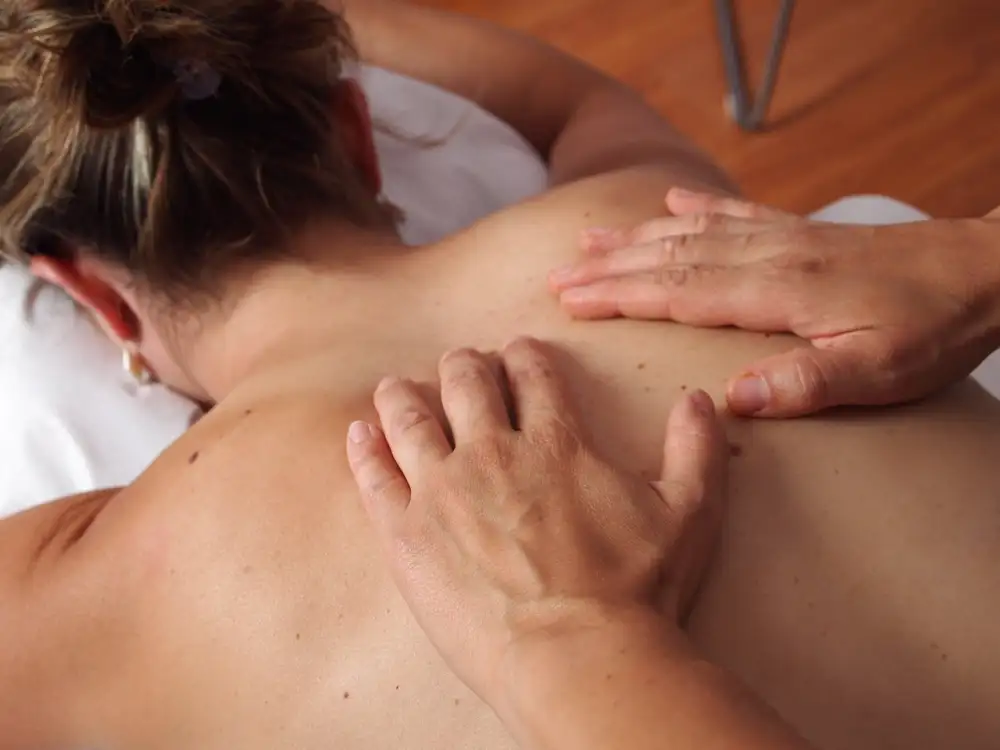Unveiling the Dark Side of Massage Creep: Shedding Light on Inappropriate Behavior during Massages for Optimal Health

- Signs of Massage Creep: Identifying Red Flags during a Massage Session
- The Impact of Massage Creep: Emotional and Physical Consequences for Clients
- Creating a Safe Environment: Tips for Massage Therapists to Prevent Massage Creep
- Empowering Clients: How to Speak Up and Address Massage Creep
- Reporting Massage Creep: Steps to Take if You Experience Inappropriate Behavior
Massage therapy is a widely recognized practice that promotes relaxation, stress relief, and overall well-being. However, it is important to acknowledge that not all massage experiences are positive. In some unfortunate cases, individuals may encounter inappropriate behavior during their massage sessions, which can be distressing and detrimental to their physical and emotional health. This article aims to shed light on the dark side of massage creep and raise awareness about the importance of creating a safe and respectful environment for all clients.
Signs of Massage Creep: Identifying Red Flags during a Massage Session
During a massage session, it is important to be aware of any signs that may indicate inappropriate behavior from the massage therapist. Some red flags to watch out for include excessive touching in sensitive areas, making suggestive comments or jokes, and not respecting personal boundaries. If the therapist seems overly interested in your personal life or tries to steer the conversation towards sexual topics, it is a clear warning sign. Trust your instincts and if something feels off or uncomfortable, it is important to speak up and address the issue immediately.
The Impact of Massage Creep: Emotional and Physical Consequences for Clients
Massage creep can have significant emotional and physical consequences for clients. Emotionally, it can lead to feelings of violation, discomfort, and anxiety. Clients may experience a loss of trust in massage therapists and may feel hesitant to seek future massages. This can result in missed opportunities for relaxation and therapeutic benefits.
Physically, inappropriate behavior during massages can cause physical pain and discomfort. Clients may endure unnecessary pressure or forceful movements that can lead to muscle soreness or even injury. The overall experience can leave clients feeling physically drained rather than rejuvenated.
It is important to recognize the impact of massage creep on clients' well-being. By addressing this issue, we can work towards creating a safe and respectful environment for all individuals seeking massage therapy.
Creating a Safe Environment: Tips for Massage Therapists to Prevent Massage Creep
Creating a safe environment is crucial for massage therapists to prevent massage creep. Here are some tips:
1. Establish clear boundaries: Clearly communicate your professional boundaries and expectations to clients before the session.
2. Maintain professionalism: Dress appropriately, use proper draping techniques, and avoid any suggestive or inappropriate language.
3. Use consent forms: Have clients sign consent forms that outline the purpose of the massage and ensure they understand appropriate behavior during the session.
4. Set up a comfortable space: Ensure the massage room is well-lit, clean, and free from distractions to create a professional atmosphere.
5. Implement a zero-tolerance policy: Make it clear that any form of inappropriate behavior will not be tolerated and may result in termination of the session.
6. Continuous education: Stay updated on ethical guidelines and attend workshops or seminars to enhance your knowledge on maintaining professional boundaries.
By following these tips, massage therapists can create a safe environment where clients feel respected and protected from any form of misconduct.
Empowering Clients: How to Speak Up and Address Massage Creep
It is crucial for clients to feel empowered and know how to address massage creep. If you ever experience inappropriate behavior during a massage, remember that your comfort and safety should always come first. Here are some steps you can take:
1. Trust your instincts: If something feels off or uncomfortable, trust your gut instinct. Don't dismiss any red flags.
2. Clearly communicate boundaries: Before the massage begins, clearly communicate your boundaries to the therapist. Let them know what areas of your body you are comfortable with being touched and what techniques you prefer.
3. Use assertive communication: If during the session, the therapist crosses any boundaries or makes you feel uncomfortable, speak up immediately. Use assertive communication to clearly express your discomfort and ask them to stop.
4. Request a different therapist: If addressing the issue with the therapist doesn't resolve the situation, ask for a different therapist or end the session altogether.
5. Document incidents: Keep a record of any inappropriate behavior, including date, time, location, and details of what occurred. This documentation may be useful if you decide to report the incident later.
Remember, it is not your fault if you experience massage creep. By speaking up and addressing the issue directly, you are taking control of your own well-being and helping create a safer environment for all clients.
Reporting Massage Creep: Steps to Take if You Experience Inappropriate Behavior
If you find yourself experiencing inappropriate behavior during a massage session, it is crucial to take action and report the incident. Here are some steps you can take:
1. Trust your instincts: If something feels off or uncomfortable, trust your gut instinct. Your feelings are valid, and it's important to prioritize your safety and well-being.
2. Speak up during the session: If you feel comfortable doing so, address the inappropriate behavior directly with the massage therapist. Clearly communicate your boundaries and ask them to stop immediately.
3. Document details: Take note of any specific details about the incident, including date, time, location, and a description of what occurred. This information will be helpful when reporting the incident later on.
4. Report to the establishment: Contact the massage establishment where the incident took place and inform them about what happened. Provide them with all relevant details and express your concerns.
5. File a complaint with licensing board: Research the licensing board for massage therapists in your area and file a formal complaint against the therapist involved. Include all documentation and evidence you have gathered.
6. Seek support: Reach out to friends, family, or support groups who can provide emotional support during this difficult time. It's important to surround yourself with people who believe in you and will stand by your side.
Remember that reporting massage creep not only helps protect yourself but also prevents others from experiencing similar situations in the future. By speaking up, you contribute to creating a safer environment within the massage therapy industry.
In conclusion, it is crucial to promote a healthy and respectful massage experience for all clients. By understanding the signs of massage creep and the impact it can have on both physical and emotional well-being, we can take steps to prevent these inappropriate behaviors from occurring. Massage therapists play a vital role in creating a safe environment by establishing clear boundaries and maintaining professional conduct at all times. Equally important is empowering clients to speak up if they experience any form of misconduct during their session. By reporting incidents promptly, we can ensure that appropriate action is taken, protecting both current and future clients from potential harm. Let us work together to foster an atmosphere of trust, respect, and optimal health in the world of massage therapy.
Published: 02. 01. 2024
Category: Health



